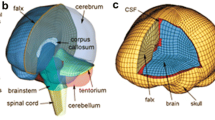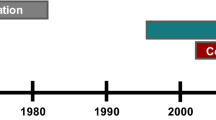Abstract
Helmeted impact devices have allowed researchers to investigate the biomechanics of head impacts in vivo. While increased impact magnitude has been associated with greater concussion risk, a definitive concussive threshold has not been established. It is likely that concussion risk is not determined by a single impact itself, but a host of predisposing factors. These factors may include genetics, fatigue, and/or prior head impact exposure. The objective of the current paper is to investigate the association between cumulative head impact magnitude and concussion risk. It is hypothesized that increased cumulative magnitudes will be associated with greater concussion risk. This retrospective analysis included participants that were recruited from regional high-schools in Illinois and Michigan from 2007 to 2014 as part of an ongoing study on concussion biomechanics. Across seven seasons, 185 high school football athletes were instrumented with the Head Impact Telemetry system. Out of 185 athletes, 31 (17%) sustained a concussion, with two athletes sustaining two concussions over the study period, yielding 33 concussive events. The system recorded 78,204 impacts for all concussed players. Linear acceleration, rotational acceleration, and head impact telemetry severity profile (HITsp) magnitudes were summed within five timeframes: the day of injury, three days prior to injury, seven days prior to injury, 30 days prior to injury, and prior in-season exposure. Logistic regressions were modeled to explain concussive events based on the singular linear acceleration, rotational acceleration, and HITsp event along with the calculated summations over time. Linear acceleration, rotational acceleration, and HITsp all produced significant models estimating concussion (p < 0.05). The strongest estimators of a concussive impact were the linear acceleration (OR = 1.040, p < 0.05), rotational acceleration (OR = 1.001, p < 0.05), and HITsp (OR = 1.003, p < 0.05) for the singular impact rather than any of the cumulative magnitude calculations. Moreover, no cumulative count measure was significant for linear or rotational acceleration. Results from this investigation support the growing literature indicating cumulative magnitude is not related to concussion likelihood. Cumulative magnitude is a simplistic measure of the total exposure sustained by a player over a given period. However, this measure is limited as it assumes the brain is a static structure unable to undergo self-repair. Future research should consider how biological recovery between impacts may influence concussion risk.
Similar content being viewed by others
References
Beckwith, J. G., R. M. Greenwald, J. J. Chu, J. J. Crisco, S. Rowson, S. M. Duma, S. P. Broglio, T. W. McAllister, K. M. Guskiewicz, J. P. Mihalik, S. Anderson, B. Schnebel, P. G. Brolinson, and M. W. Collins. Head impact exposure sustained by football players on days of diagnosed concussion. Med. Sci. Sports Exerc. 45:737–746, 2013.
Beckwith, J. G., R. M. Greenwald, J. J. Chu, J. J. Crisco, S. Rowson, S. M. Duma, S. P. Broglio, T. W. McAllister, K. M. Guskiewicz, J. P. Mihalik, S. Anderson, B. Schnebel, P. G. Brolinson, and M. W. Collins. Timing of concussion diagnosis is related to head impact exposure prior to injury. Med. Sci. Sports Exerc. 45:747–754, 2013.
Broglio, S. P., J. T. Eckner, D. Martini, J. J. Sosnoff, J. S. Kutcher, and C. Randolph. Cumulative head impact burden in high school football. J. Neurotrauma 28:2069–2078, 2011.
Crisco, J. J., J. J. Chu, and R. M. Greenwald. An algorithm for estimating acceleration magnitude and impact location using multiple nonorthogonal single-axis accelerometers. J. Biomech. Eng. 126:849–854, 2004.
Eckner, J. T., M. Sabin, J. S. Kutcher, and S. P. Broglio. No evidence for a cumulative impact effect on concussion injury threshold. J. Neurotrauma 28:2079–2090, 2011.
Funk, J. R., S. M. Duma, S. J. Manoogian, and S. Rowson. Biomechanical Risk Estimates for Mild Traumatic Brain Injury. San Antonio: Biodynamic Research Corporation, 2007.
Gessel, L. M., S. K. Fields, C. L. Collins, R. W. Dick, and R. D. Comstock. Concussions among united states high school and collegiate athletes. J. Athl. Train. 42:495–503, 2007.
Giza, C. C., and D. A. Hovda. The new neurometabolic cascade of concussion. Neurosurgery 75:S24–S33, 2014.
Greenwald, R. M., J. T. Gwin, J. J. Chu, and J. J. Crisco. Head impact severity measures for evaluating mild traumatic brain injury risk exposure. Neurosurgery 62:789–798, 2008.
Guskiewicz, K. M., and J. P. Mihalik. Biomechanics of sport concussion: quest for the elusive injury threshold. Exerc. Sport Sci. Rev. 39:4–11, 2011.
Guskiewicz, K. M., N. L. Weaver, D. A. Padua, and W. E. Garrett. Epidemiology of concussion in collegiate and high school football players. Am. J. Sports Med. 28:643–650, 2000.
Jadischke, R., D. C. Viano, N. Dau, A. I. King, and J. McCarthy. On the accuracy of the Head Impact Telemetry (HIT) system used in football helmets. J. Biomech. 46:2310–2315, 2013.
King, A. I., K. H. Yang, L. Zhang, and W. Hardy. Is Head Injury Caused by Linear or Angular Acceleration, 2003. http://snell-helmets.org/docs/articles/hic/King_IRCOBI_2003.pdf.
LaRoche, A. A., L. D. Nelson, P. K. Connelly, K. D. Walter, and M. A. McCrea. Sport-related concussion reporting and state legislative effects. Clin. J. Sport Med. 26:33–39, 2016.
Lincoln, A. E., S. V. Caswell, J. L. Almquist, R. E. Dunn, J. B. Norris, and R. Y. Hinton. Trends in concussion incidence in high school sports: a prospective 11-year study. Am. J. Sports Med. 39:958–963, 2011.
McCrea, M., T. Hammeke, G. Olsen, P. Leo, and K. Guskiewicz. Unreported concussion in high school football players. Clin. J. Sport Med. 14:13–17, 2004.
McCrory, P., W. H. Meeuwisse, M. Aubry, R. C. Cantu, J. Dvořák, R. J. Echemendia, L. Engebretsen, K. Johnston, J. S. Kutcher, M. Raftery, A. Sills, B. W. Benson, G. A. Davis, R. Ellenbogen, K. M. Guskiewicz, S. A. Herring, G. L. Iverson, B. D. Jordan, J. Kissick, M. McCrea, A. S. McIntosh, D. Maddocks, M. Makdissi, L. Purcell, M. Putukian, K. Schneider, C. H. Tator, and M. Turner. Consensus Statement on Concussion in Sport: The 4th International Conference on Concussion in Sport, Zurich, November 2012. J. Athl. Train. 48:554–575, 2013.
National Federation of State High School Associations. NFHS Handbook 2015–16. Indianapolis, Indiana, 2015.
Ng, T. P., W. R. Bussone, and S. M. Duma. The effect of gender and body size on linear accelerations of the head observed during daily activities. Biomed. Sci. Instrum. 42:25–30, 2006.
Prins, M. L., D. Alexander, C. C. Giza, and D. A. Hovda. Repeated mild traumatic brain injury: mechanisms of cerebral vulnerability. J. Neurotrauma 30:30–38, 2013.
Quality Standards Subcommittee. Practice parameter: the management of concussion in sports (summary statement). Neurology 48:581–585, 1997.
Rowson, S., and S. M. Duma. Brain injury prediction: assessing the combined probability of concussion using linear and rotational head acceleration. Ann. Biomed. Eng. 41:873–882, 2013.
Rowson, S., G. Brolinson, M. Goforth, D. Dietter, and S. Duma. Linear and angular head acceleration measurements in collegiate football. J. Biomech. Eng. 131:061016, 2009.
Rowson, S., S. M. Duma, J. G. Beckwith, J. J. Chu, R. M. Greenwald, J. J. Crisco, P. G. Brolinson, A.-C. Duhaime, T. W. McAllister, and A. C. Maerlender. Rotational head kinematics in football impacts: an injury risk function for concussion. Ann. Biomed. Eng. 40:1–13, 2012.
Siegmund, G. P., K. M. Guskiewicz, S. W. Marshall, A. L. DeMarco, and S. J. Bonin. Laboratory validation of two wearable sensor systems for measuring head impact severity in football players. Biomed. Eng. Ann. 2015. doi:10.1007/s10439-015-1420-6.
Talavage, T. M., E. A. Nauman, E. L. Breedlove, U. Yoruk, A. E. Dye, K. E. Morigaki, H. Feuer, and L. J. Leverenz. Functionally-detected cognitive impairment in high school football players without clinically-diagnosed concussion. J. Neurotrauma 31:327–338, 2014.
Urban, J. E., E. M. Davenport, A. J. Golman, J. A. Maldjian, C. T. Whitlow, A. K. Powers, and J. D. Stitzel. Head impact exposure in youth football: high school ages 14 to 18 years and cumulative impact analysis. Ann. Biomed. Eng. 41:2474–2487, 2013.
Acknowledgments
The authors would like to acknowledge the assistance of Dr’s Douglas Martini and Richelle Williams along with the coaches, players, and staff of Unity High School (Tolono, IL), Skyline High School (Ann Arbor, MI), and Father Gabriel Richard High School (Ann Arbor, MI). This investigation was funded by the National Institutes of Health: National Institute of Neurological Disorders and Stroke (1R15NS081691-01).
Author information
Authors and Affiliations
Corresponding author
Additional information
Associate Editor Stefan M. Duma oversaw the review of this article.
Rights and permissions
About this article
Cite this article
O’Connor, K.L., Peeters, T., Szymanski, S. et al. Individual Impact Magnitude vs. Cumulative Magnitude for Estimating Concussion Odds. Ann Biomed Eng 45, 1985–1992 (2017). https://doi.org/10.1007/s10439-017-1843-3
Received:
Accepted:
Published:
Issue Date:
DOI: https://doi.org/10.1007/s10439-017-1843-3




